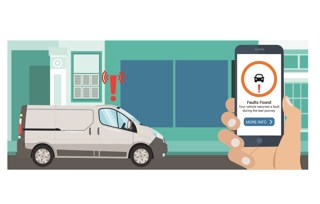The majority of drivers do not carry out basic checks on their car such as oil level and tyre condition as often as they should, RAC research suggests.
A survey of 2,000 motorists found that more than a third (38%) said they check their car’s oil at best every two months, with 7% saying they wait until a warning light comes on before they do anything. That’s despite too little oil risking causing dangerous and expensive engine damage.
Less than a quarter (24%) check their oil as often as the RAC recommends, which is at the least every two weeks and before long journeys.
When it comes to tyres, a car’s only contact with the road, 58% check the condition of their vehicle’s tyres – including tread levels – at least once a month.
The RAC advises that tyres are checked at least this often, and possibly even more frequently, in case of damage from potholes, and prior to long road trips.
However, around a third (37%) do it at best once every two months, and at worst less than once a year.
Tyres that are damaged or are low on tread can make driving extremely unsafe, especially on icy and snowy roads.
RAC patrol of the year Chris Burgess said: “The prolonged cold snap now gripping the country means that the risks of vehicles breaking down increases significantly.
“During the snowy conditions in December we saw breakdown volumes increase by around a fifth (20%) in some parts of the country so it really does pay to make sure your car is prepared before setting out.”
The RAC research found that it is a similar picture with tyre pressure – unless a car is fitted with a pressure monitoring system, tyres should be checked every fortnight and before long journeys. But only a third of respondents (32%) checked them that often, with a similar number (29%) doing it once a month and a fifth (18%) leaving it until at best every three months, and at worst less than once a year.
Correctly inflated tyres can reduce the chance of a blow-out and significantly improves fuel efficiency.
But it is the other form of rubber on vehicles – windscreen wipers – that appear to be most neglected despite the crucial job they do in keeping a driver’s view clear. While a third of respondents (33%) look at them at least monthly, 30% said that they wait until the wipers stop clearing the windscreen properly before checking them.
While the days are getting longer, it’s also vital drivers are visible in low light, yet less than a third of drivers (30%) check their lights at the RAC’s suggested weekly interval, with a quarter (24%) doing it every three months at best.
The other vital thing to check under the bonnet is the level of engine coolant. Modern vehicles should not need topping up between services, but a drop in the level of coolant could indicate a problem and lead to engine overheating.
Only 26% of drivers said they looked at the coolant level at the recommended interval of every two weeks, with 24% checking it every month and the remainder checking it less frequently or even waiting for a warning light to appear on the dashboard.
With very low temperatures forecast over the coming days, even during the daytime, the RAC is strongly recommending drivers take a small amount of time to ensure their car is prepared for winter and less likely to let them down.
Burgess said: “Checking things like tyres, oil, coolant and wipers takes little time – and can often be simple and reasonably cheap to sort out. The risks of not checking things and getting them fixed or topped up is potentially disastrous – at worst, you could be risking an accident or breakdown in freezing conditions, and at best you’re storing up problems that could prove to be very expensive in the long run.”
Richard Leonard, Highways England Head of Road Safety, added: “Gritters will be out treating our roads around the clock, but it is still important to drive to the conditions when snow is forecast.
“Keep your distance and reduce your speed, because even in conditions that seem normal, and where the snow is not settling, it can be slippery if ice patches have formed, or where fresh grit has not been worked into the carriageway.
“Drivers should plan their journeys, monitor weather reports and pack a snow kit of blankets, food, water and a shovel.”
|
Basic maintenance task |
RAC recommends this is checked… |
Proportion of respondents who said they checked at least this often |
Danger of not checking and keeping on top of this |
|
Check tyre condition, including tread depth
|
At least monthly (and before long journeys) |
58% |
Lack of grip and risk of a blow-out |
|
Check windscreen wipers
|
Monthly (more frequently in winter) |
33% |
Wipers split and stop clearing the windscreen altogether, causing a hazard in times of inclement weather especially
|
|
Check tyre pressure |
Every 2 weeks and before a long journey (no requirement if TPMS fitted but advisable to check before a long journey)
|
32% |
Underinflated tyres increase rolling resistance, reducing fuel efficiency |
|
Check front and rear lights
|
Weekly |
30% |
Less visible to other road users; poor view of the road ahead |
|
Check oil level
|
Every 2 weeks and before a long journey |
24% |
Severe engine damage |
|
Check coolant level
|
Every 2 weeks and before a long journey |
26% |
Engine overheating |





















Login to comment
Comments
No comments have been made yet.